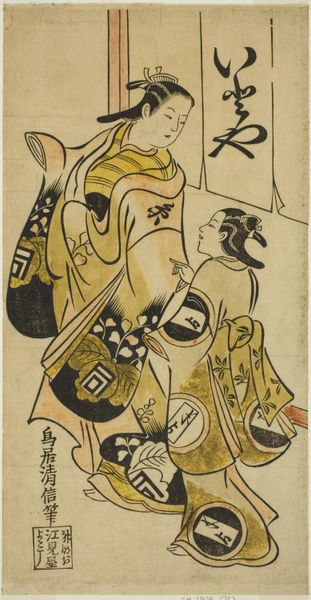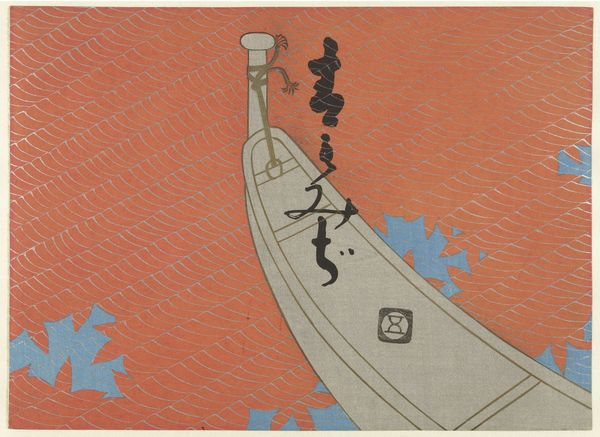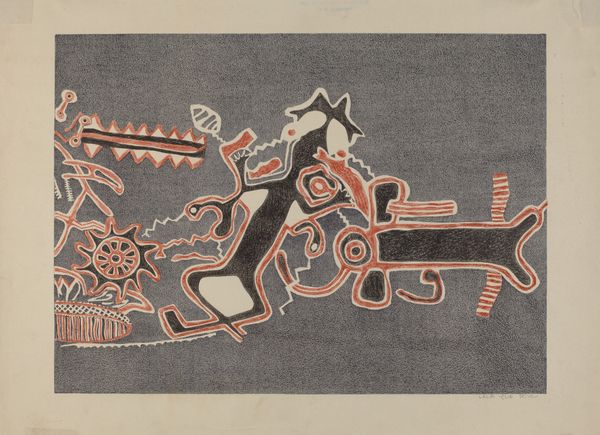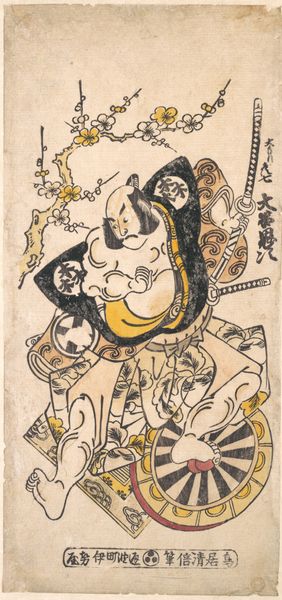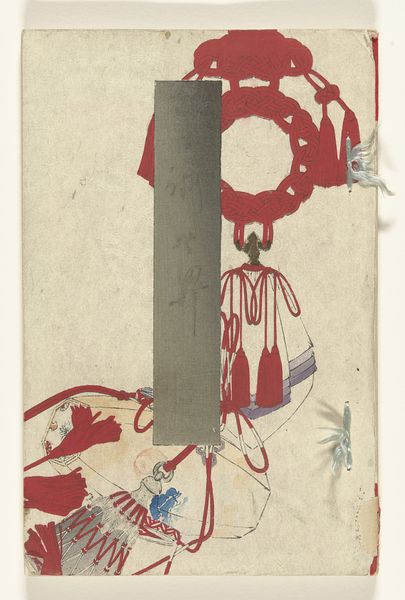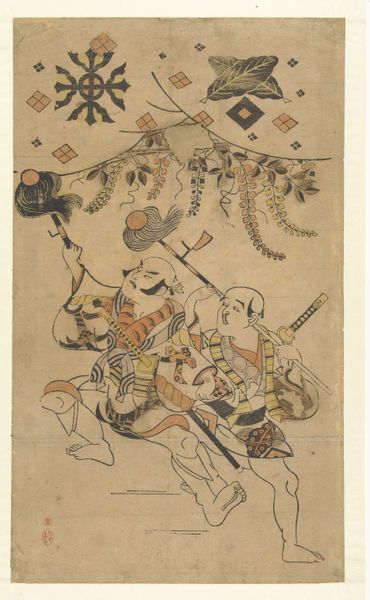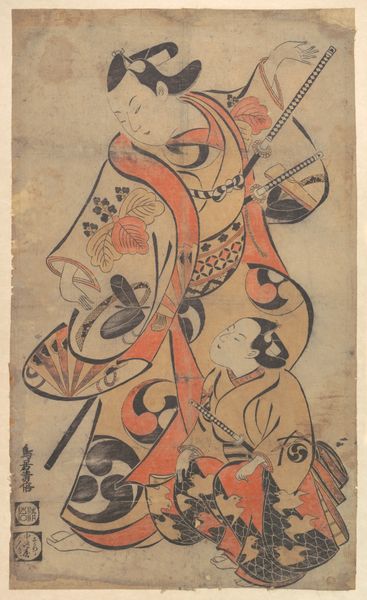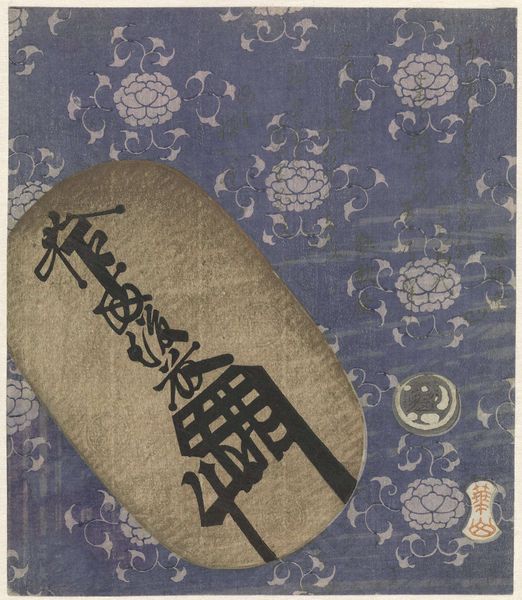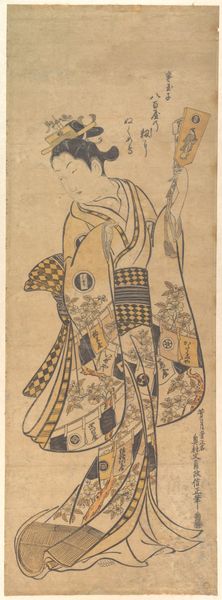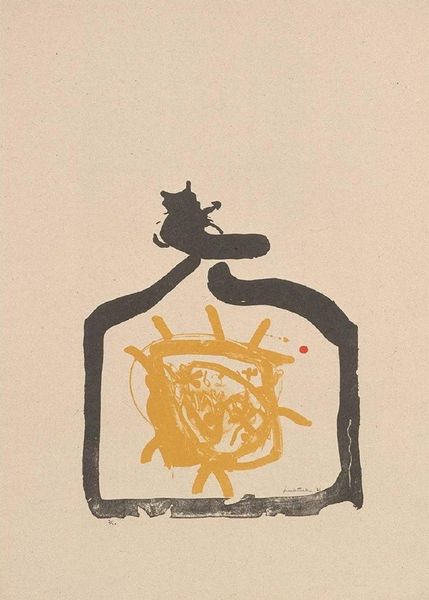
Dimensions: height 223 mm, width 153 mm
Copyright: Rijks Museum: Open Domain
Curator: Here we have Goyo Hashiguchi's "Kleine Koekoek," made around 1906 to 1907. It’s a striking woodblock print now housed here at the Rijksmuseum. Editor: My first impression is a sense of muted energy, almost a restrained joyfulness, conveyed through that stark white figure against the earthy backdrop. Curator: Restrained is an excellent way to put it. What interests me about the print are the techniques and processes employed to bring the viewer into an evocative world of line and wood carving. We have to appreciate how each line demanded hours of labor. Editor: And thinking about that labor in a historical context opens up all kinds of discussions about the commodification of leisure and its impact on society—who got to enjoy carousel rides, and who made them possible, culturally and economically? What was Hashiguchi attempting to represent by showcasing it in this artwork? Curator: A fascinating question. When considering these kinds of prints, though, it’s critical that we keep our focus on the physicality of it all, not just its potential symbolisms. For example, how does the choice of wood, the carving implements, the ink influence its aesthetic power? Ukiyo-e prints, which Hashiguchi was engaging with here, came to being during a time of immense class tensions, though, no? Editor: Absolutely. Ukiyo-e in general provides powerful, even pointed social commentary, especially given the constraints of the Tokugawa era. This era encouraged the arts, but there were specific strictures attached. Curator: Constraints that manifested within the physical labor of making prints... But if you compare his piece to other, more traditional Japanese works, there is something lost from more classical renderings here... an edge perhaps. Do you feel like Hashiguchi made work of the same symbolic value as his forerunners, given how abstracted from tradition his forms have become? Editor: I would never seek to measure worth according to antiquated symbolic values, as these values change from generation to generation. Hashiguchi's forms are fascinating, abstracted as they are, but to limit art to symbolic value seems... I daresay... immaterial. I feel that this artist gave voice to an aesthetic and cultural experience deeply embedded in complex politics, even now. Curator: Very well said. Each artist engages with that moment, with material conditions to find new and challenging insights into art's ever-changing role.
Comments
No comments
Be the first to comment and join the conversation on the ultimate creative platform.
